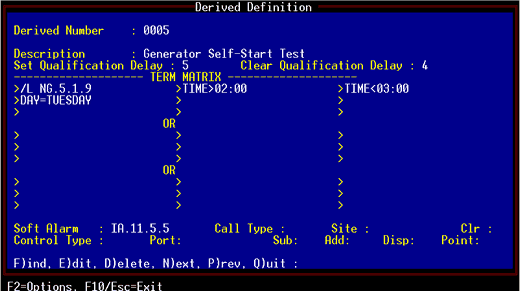Check out our White Paper Series!
A complete library of helpful advice and survival guides for every aspect of system monitoring and control.
1-800-693-0351
Have a specific question? Ask our team of expert engineers and get a specific answer!
Sign up for the next DPS Factory Training!

Whether you're new to our equipment or you've used it for years, DPS factory training is the best way to get more from your monitoring.
Reserve Your Seat TodayAn interesting and useful application for derived alarms is creating alarm formulas that alert you when regularly scheduled events do not happen. These alarms can inform you when something that should happen-equipment that normally starts up automatically or a scheduled event that occurs regularly-doesn't.
This is particularly useful for maintaining visibility of recurrent background events, such as periodic equipment tests. A weekly alarm that informs system operators that all is well is often considered a nuisance alarm and will be ignored, and no one will notice when the alarm doesn't happen. A negative derived alarm will instead inform system operators only when the equipment test fails to occur as scheduled.
Much like a floor supervisor, this setup tells your NetGuardian to make sure your equipment is working regularly and at the appointed times.
For example, let's say a generator is supposed to run a self-start test early every Tuesday morning, and you want to know if the generator doesn't self-start. When the generator starts, it sends an alarm signal to a NetGuardian, which is mapped in T/MonXM to the alarm point NG.5.1.9.

So you could create the alarm formula shown here, which states: /L.NG.5.1.9 and TIME>02:00 and TIME<03:00 and DAY=TUESDAY.
Translated into English, this says, "Declare an alarm if no alarm signal is received at NG.5.1.9 between 2:00 and 3:00 A.M. on Tuesday."
By adding the "/" (NOT) symbol before the alarm point, you have defined the derived alarm to occur when the alarm at the NetGuardian point doesn't happen.
The time and day terms are important, because they define when the test should happen. The NetGuardian alarm point will, of course, be inactive all other times as well, but you're only interested in the alarm point's inactivity during the time the test should take place.